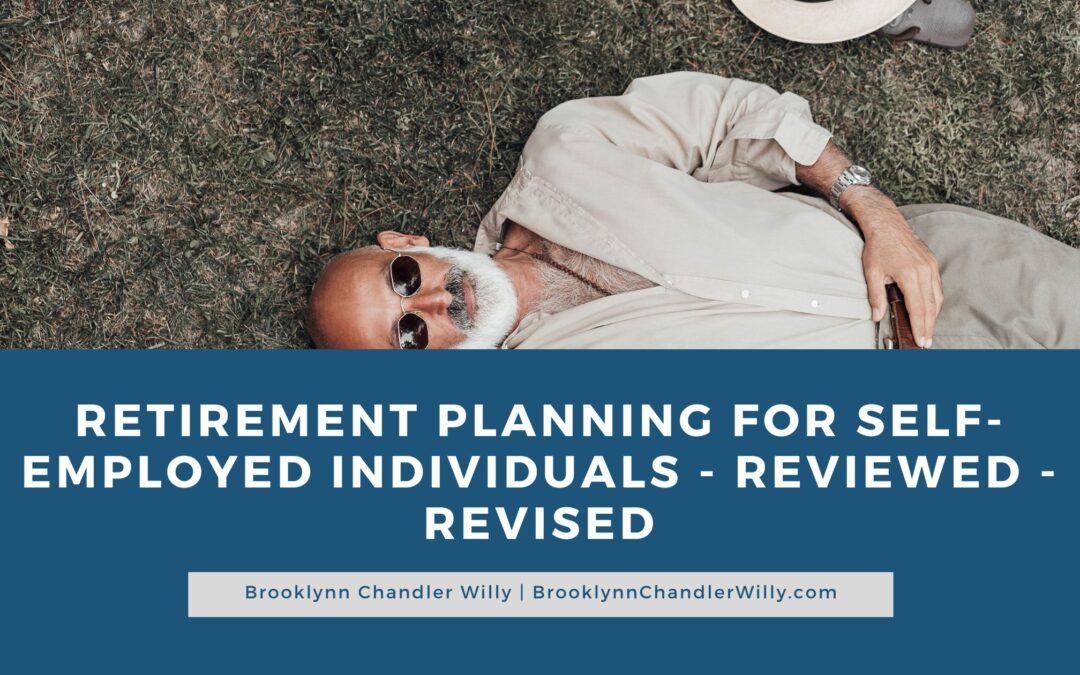Retirement planning is essential for everyone, but it can be incredibly challenging for self-employed individuals. Unlike employees, self-employed individuals cannot access employer-sponsored retirement plans, such as 401(k)s or pensions. As a result, self-employed individuals must take proactive steps to ensure they are saving enough for retirement.
Here are some tips for retirement planning for self-employed individuals:
Open a Retirement Account
One of the easiest ways for self-employed individuals to save for retirement is to open a retirement account. There are several types of retirement accounts available, including Individual Retirement Accounts (IRAs), Simplified Employee Pension (SEP) plans, and Solo 401(k)s.
IRAs are available to anyone with earned income and offer tax advantages that can help retirement savings grow more quickly. SEP plans, and Solo 401(k)s are designed specifically for self-employed individuals and offer higher contribution limits than IRAs.
When choosing a retirement account, it is essential to consider factors such as contribution limits, tax advantages, and investment options. Consult with a financial advisor to determine which retirement account suits your needs.
Set a Retirement Savings Goal
Once you have opened a retirement account, setting a retirement savings goal is crucial. This will help you stay motivated to save and give you a concrete target to work toward.
To determine your retirement savings goal, consider your current age, your expected retirement age, and your expected retirement expenses. Consider factors such as inflation and potential investment returns.
Using a retirement savings calculator to determine the amount you will need to save each year to reach your retirement savings goal can be helpful.
Make Regular Contributions
Once you have set a retirement savings goal, it is essential to make regular contributions to your retirement account. This will help ensure that you progress toward your goal and that your retirement savings are growing over time.
If you have a SEP plan or Solo 401(k), you can contribute as both the employer and the employee, which can help maximize your retirement savings. It is important to note that contribution limits can change yearly, so staying up-to-date on the latest rules is essential.
Invest Wisely
When saving for retirement, it is crucial to invest wisely. This means choosing investments that are appropriate for your risk tolerance and that have the potential to provide strong returns over time.
It can be helpful to diversify your investments across different asset classes. These assets include stocks, bonds, and real estate. This can help manage risk and potentially maximize returns. It is also essential to monitor your investments regularly and make adjustments as needed. This may involve periodically rebalancing your portfolio or changing your investment strategy based on market conditions.
Consider Working with a Financial Advisor
Retirement planning can be complex, and navigating all the different options and considerations on your own can be challenging. For this reason, many self-employed individuals choose to work with a financial advisor to help them develop a comprehensive retirement plan.
A financial advisor can help you evaluate your retirement savings goal, choose the proper retirement account, and develop an appropriate investment strategy for your needs. They can also help you monitor your progress and make adjustments as needed.
Retirement planning is essential for self-employed individuals who do not have access to employer-sponsored retirement plans. By opening a retirement account, setting a retirement savings goal, making regular contributions, investing wisely, and considering working with a financial advisor, self-employed individuals can take proactive steps to ensure they are saving enough for retirement.
Diversification Disclosure:
Diversification does not guarantee a profit or protect against a loss in a declining market. It is a method used to help manage investment risk.

